Recognizing Intra-amniotic Band-like Structures on Obstetric Ultrasound
Amniotic band syndrome is very rare and has poor outcomes. Obstetric ultrasound can identify potential anatomic abnormalities.
Fig. 1
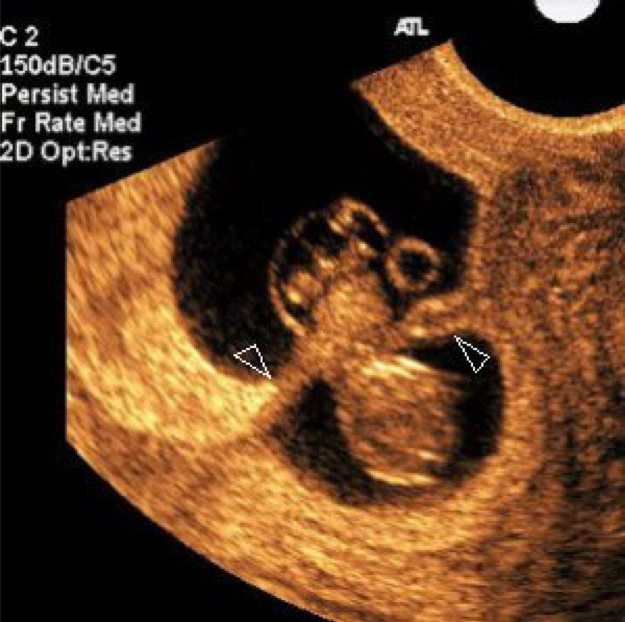
Fig. 2
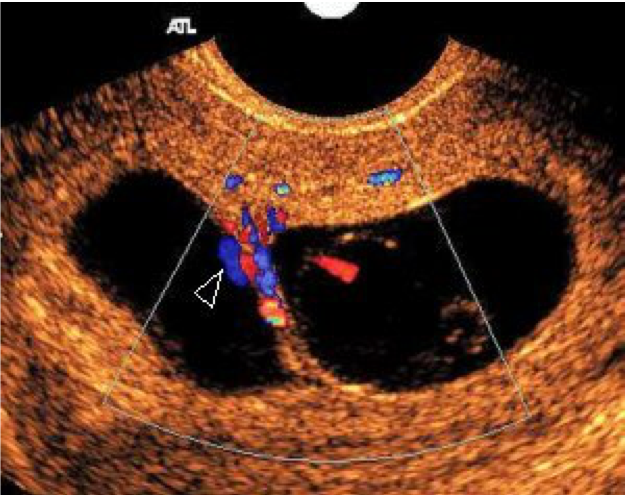
Fig. 3
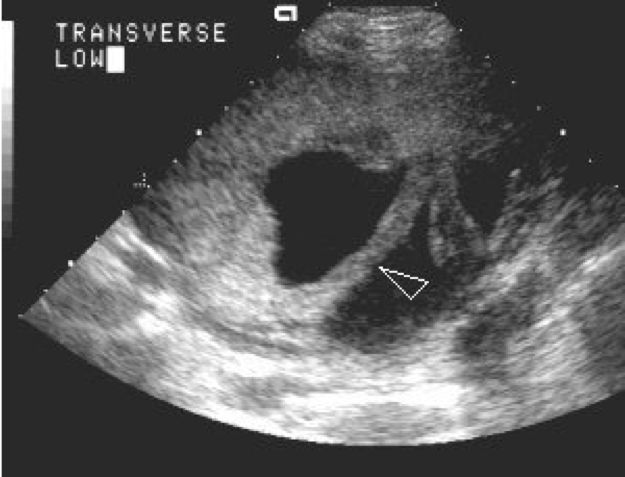
Fig. 4
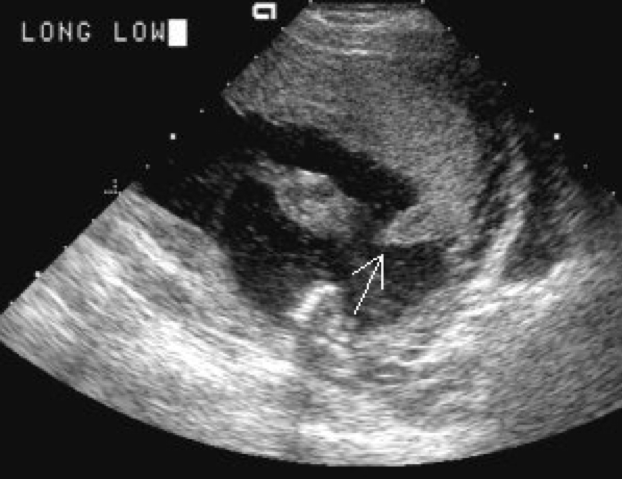
Fig. 5

Fig. 6
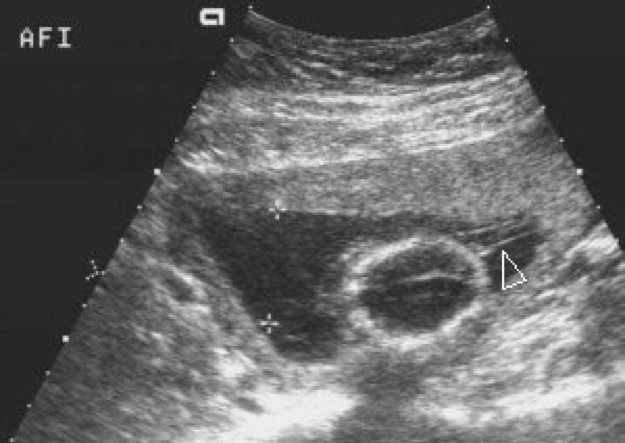
Fig. 7
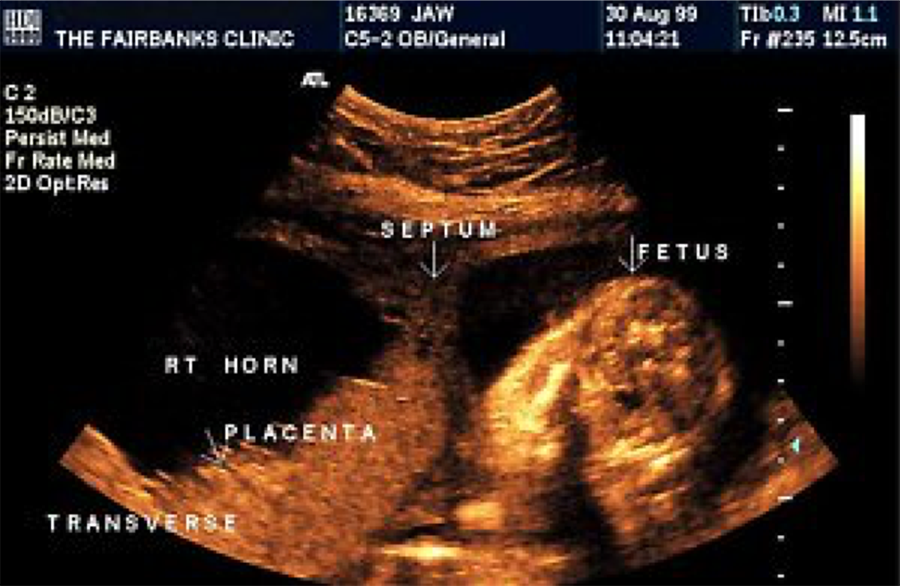
Fig. 8
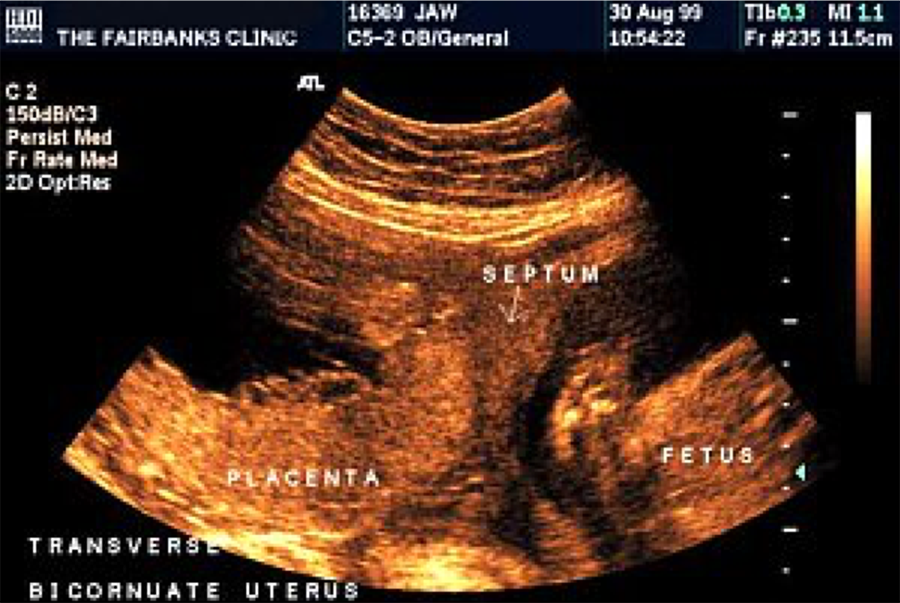
Fig. 9
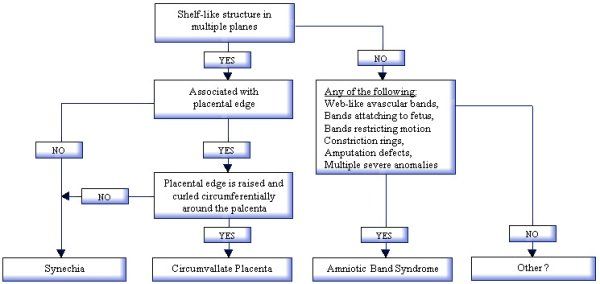
Fig. 10
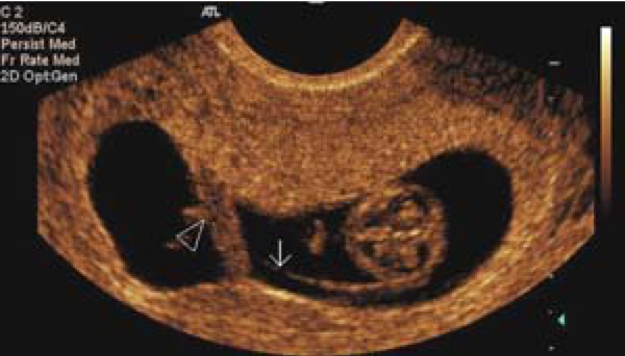
Introduction:
Band-like structures within the gestational sac are frequently noted on obstetric sonograms during the first and second trimester of pregnancy. When such structures are noted, it is important to recognize the etiology of the finding as the prognostic factors and clinical significance varies widely from one entity to the next. Despite the plentiful publicity that various types of band-like structures have received in the literature, confusion still exists in the medical community about the precise diagnosis in these cases. In particular, misdiagnosis of benign synechia as amniotic band is quite common, and this raises undue concern about the proper development and outcome of a perfectly normal pregnancy. This article provides an overview of the differential types of band-like structures commonly encountered during obstetric sonography, their classification, and clinical significance.
Synechiae:
(also known as "amniotic sheets" or "amniotic folds")
A synechia is a term meaning an "adhesion", or a fibrous scar. Uterine synechiae have also been referred to as "amniotic sheets" or "amniotic folds". Many patients with sonographically demonstrable uterine synechia have clinical history of uterine instrumentation (voluntary termination, D&C) or uterine infections to explain scar formation. However, it is not unusual to encounter patients with a synechia in whom any relevant past history is lacking. Most commonly, uterine synechiae are noted as an incidental finding on obstetric sonograms. In general, synechiae do not interfere with the development and growth of pregnancy, and are rarely associated with any complications.1 There is some evidence to suggest that large synechiae may be the cause of malpresentation due to partial compartmentalization of the uterine cavity 2, and may also be associated with lower birth weight.3,4 Visualization of a band-like structure should not be confused with amniotic band syndrome especially when thorough fetal anatomy survey reveals no structural anomalies.1,2,5,6
Ultrasound Appearances:
Shelf-like thick band communicating along it's length with the uterine wall along it's length. In other words, a synechia has a base and a free edge. This appearance is caused by a combination of the fibrous synechia itself, and the complete wrapping of fetal membranes around the synechia. Color Doppler shows blood flow in the majority of synechial bands, while this is not typical of amniotic bands. Occasionally, the placenta may attach onto the synechia2 producing an appearance of a placental reflection which may mimic subchorionic hemorrhage.
First trimester transvaginal sonogram showing an interesting synechia (arrowheads, Fig. 1). Color doppler demonstrates blood flow within the synechia (arrowhead, Fig. 2).
Circumvallate Placenta:
Circumvallate placenta occurs in 1-2% of pregnancies.5 This type of extrachorial placental configuration is characterized by raised and folded edge of the chorionic membrane at the transition of membranous-to-villous placenta. The raised membrane may on 2-D ultrasound appear as a band crossing the gestational sac.5,7,8 Circumvallate placentas are clinically relevant, as they have a demonstrable association with antenatal complications including bleeding and preterm labor. Regrettably, definitive sonographic diagnosis of a circumvallate placenta is difficult and overall accuracy of sonographic diagnosis appears quite poor even when assessed by an experienced observer.8
Ultrasound Appearances:
Shelf-like structure associated with placental edge. In orthogonal views, the placental edge appears folded or curled.
This thick band-like structure appears to communicate with the placental edge (arrowhead, Fig. 3). In orthogonal view, the placental edge appears curled (arrow (Fig. 4).
Amniotic Bands:
(also known as: Amniotic Band Syndrome, ADAM -Amniotic Deformity, Adhesion, Mutilation- Complex)
True amniotic bands are a relatively rare entity. When detected the prognosis of amniotic bands is usually very poor. Amniotic Bands, unlike synechia or circumvallate placental edge, can freely criss-cross the amniotic sac. They are often multiple and may be attached to fetal body parts. Entanglement of the fetus in the amniotic bands may occur which results in a range of abnormalities ranging from band constriction to full amputation of limbs, dissection of abdomen, or cranium, and other bizarre anomalies. When constriction rings affect a fetal extremity, distal edema, and restriction of motion provide further supporting evidence of amniotic band syndrome.2,5,9 Gradual constriction-to-amputation process has been described and observed sonographically on serial follow-ups.10 Amniotic band syndrome has also been associated with Limb Body-Wall Complex (LBWC) anomaly which is characterized by thoraco-abdominoschisis with internal organ evisceration into the extraembryonic coelom, severe scoliosis, short umbilical cord, and limb anomalies. It is believed, however, that Amniotic Band Syndrome and LBWC are pathologically distinct entities.10-12
Ultrasound Appearance: Usually thin membrane-like strands criss-crossing the amniotic sac and attached to fetal body parts. The most common finding are constriction rings, which can be demonstrated on entangled body parts and are often associated with distal lymphedema. Amniotic bands are not "shelf-like" when examined in multiple planes. Associated fetal anomalies are usually present, and may be severe. These include: asymmetric craniofacial clefts, abdominal wall disruptions, and limb deformities. Any body area may be involved and the characteristic anomalies can be described as: restrictions, constrictions, dissection, and amputations.
A thin amniotic band attaches to the fetal cranium (arrowhead, Fig. 6).
Other Bands:
Other less common types of band-like appearing structures may also be observed on obstetric sonogram. These include: chorio-amniotic separation (normal finding in the 1st trimester up to 16 weeks), velamentous cord insertion13, uterine fusion abnormalities (bicornuate, septate uterus, etc.)14, and remaining membranes after demise of a twin. In these situations, correlation of ultrasound features with patient's clinical history can be useful (Figs. 7-8).
Fundal septum is seen in this patient with bicornuate uterus. The placenta is implanted posteriorly within the right horn and attaches onto the septal wall.
Approach to Evaluating Band-like Structures:
The following diagram (Fig. 9) can be utilized to aid diagnosis when a band-like structure is visualized in the uterus. The authors advise caution, however, as there may be some overlap of appearances in the different categories.
A combination of band-like structures was noted on this first trimester sonogram. A synechia was detected (arrowhead, Fig. 10) and normal margin of the amnion was also seen in it's vicinity (arrow, Fig. 10).
Conclusions:
Band-like structures are frequently visualized on obstetric ultrasound. The vast majority of these are benign uterine synechia which have virtually no clinical relevance. Less frequently, a circumvallate placenta is noted. It is important to recognize the association of circumvallate placenta with bleeding, and pre-term labor, however when a circumvallate placenta is suspected on ultrasound, the prognosis for normal outcome is generally good. Amniotic band syndrome is a very rare condition, however, is associated with the poorest outcome due to the potential for development of severe anatomic abnormalities. Other entities may produce an appearance of a band within the gestational sac, however these are less frequent and are usually not difficult to differentiate sonographically.
Meta-Analysis Shows No Difference Between bpMRI and mpMRI in Ruling Out csPCa
March 6th 2025In an 18-study meta-analysis involving over 4,600 patients, researchers found that bpMRI and mpMRI had equivalent pooled negative predictive value (NPV) of 92 percent for clinically significant prostate cancer (csPCa).
Is MRI Contrast Enhancement Necessary for Long-Term Monitoring of Diffuse Glioma?
March 4th 2025In a comparison of contrast-enhanced T1-weighted (CET1w) MRI (and T2-weighted MRI/FLAIR imaging, researchers found that only three out of 82 cases of glioma progression were solely detected with CET1w MRI.